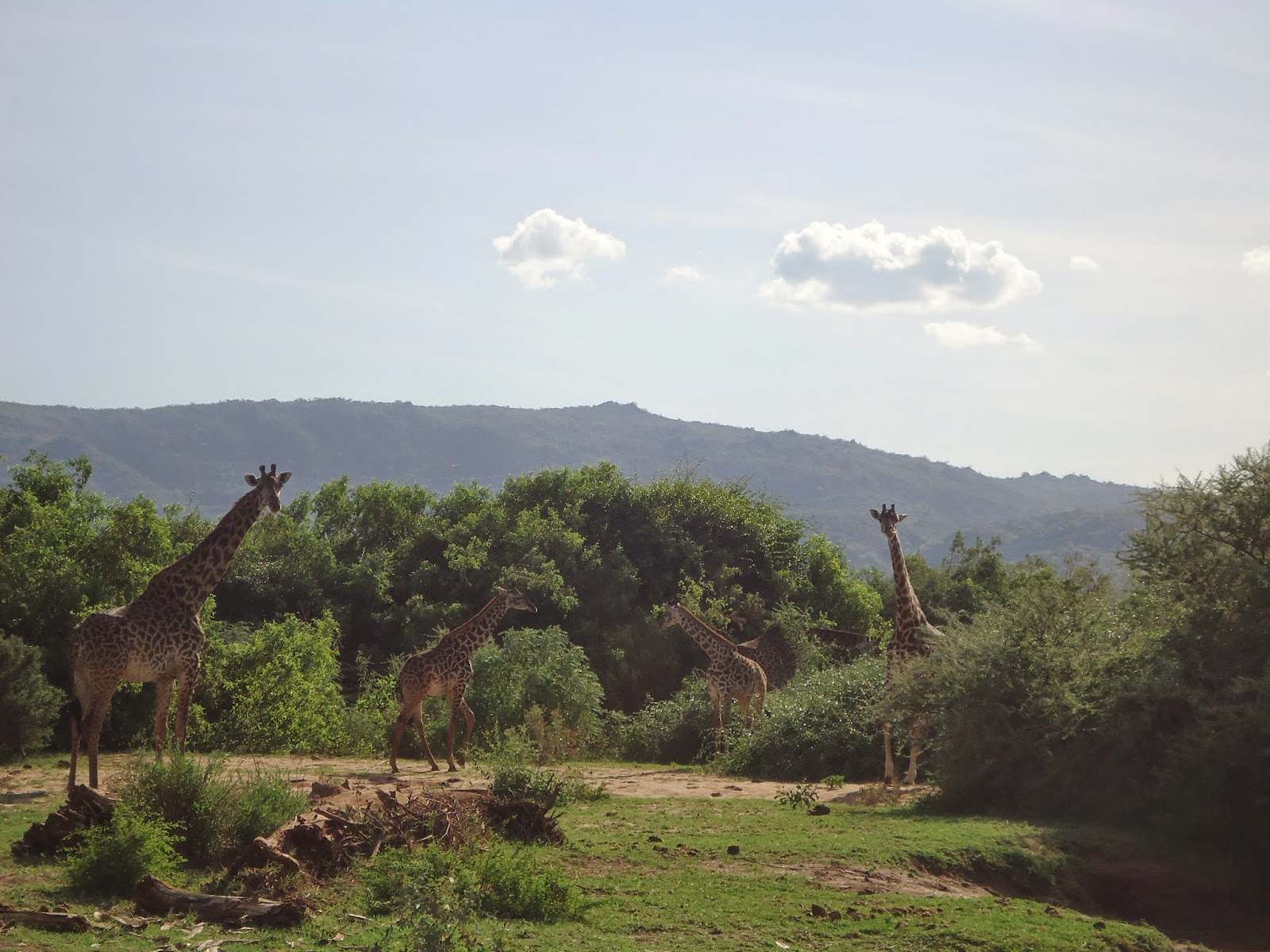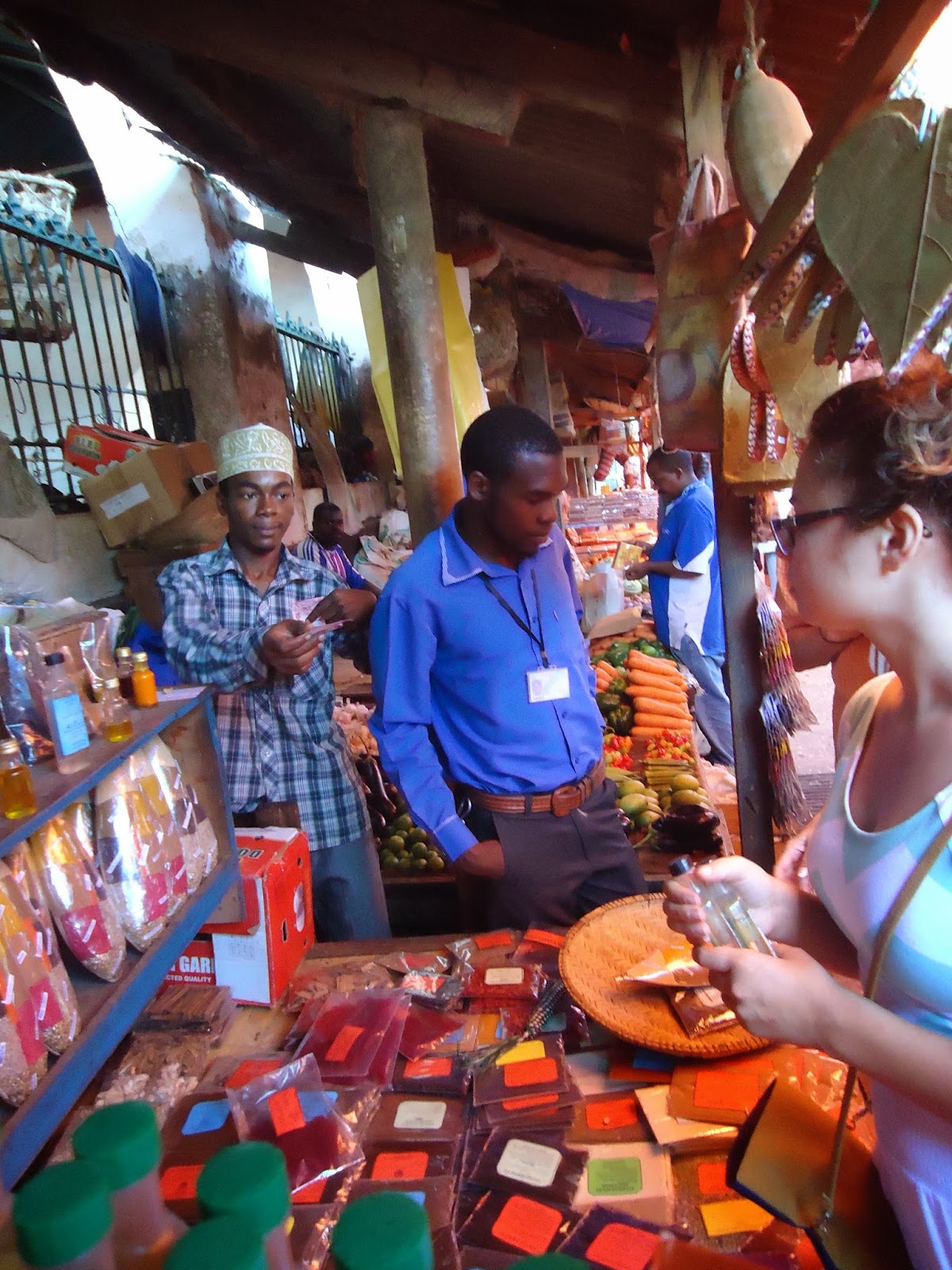By far, this must have been my best night yet in Tanzania.
For my program, we have the most amazing Tanzanian woman, Mercy, who ensures we
survive our time abroad. Not only have we been able to come to Mercy with our
questions about cultural norms, classes and language translations, but I’ve had
the opportunity to find a wonderful Tanzanian friend who I can learn from on a
daily basis.
Mercy’s sister got married this weekend and we (myself and
another American student) had the great honor of attending this event. My day
began at 9 am when I arrived at Mercy’s home. Despite its small size, the home
somehow serves to keep Mercy, her husband (John), their son (Jesse), their
housegirl (Rukia), and Mercy’s brother (Johannes). Somehow in the middle of all
this chaos, there’s a reasonable amount of room to get things done.
Mercy and I left for town with the hopes of getting our hair
done. Yes, I officially made it into the intimidating salons filled with Swahili
town gossip and a million women dying to play with my hair. The final result
looked like I was wearing a beanie.
Mercy got her stunning weave put into place and the two of us prepared to find
our ride and get home.
Back at home, our clothes were all laid out, Mercy’s hot
pink dress, the bride’s daughter’s flower girl ensemble, suits for John and
Johannes, my leopard print number ( a gift from my mama), and a tuxedo for
little Jesse. The other American, Kate, arrived just in time for our rush of
changing and preparation as we tried to make it out the door and to the church
on time.
When we arrived late to the church, I was immediately struck
by the fact that there were no cars in the parking lot and no people in the
pews. Okay, yeah I know African time is a thing, but I didn’t think the whole
congregation was planning on showing up an hour late. However, by the time it
had started, we somehow received front row seats next to the family. The perks
of being an American are endless here.
As the service began and the bride and groom drove up in
their ribbon covered cars, everyone left the pews to dance around the church
and up the aisle, the appropriate introduction for the wedding procession. As
people dance back towards their seat to a variety of gospel music, the
bridesmaids and groomsmen groove on in with an organized line dance. Finally
the bride walks in as beautifully and gracefully as you can imagine. She is the
only one not dancing and for reasons unknown, does not smile.


The groom comes from the altar and meets her halfway down the aisle. As they meet, the pastor joins them for the beginning of the ceremony that eventually commences in the lifting of her veil. The two return to the altar where chairs await them. The four king-sized thrones are for the bride, groom and their two witnesses. Following a performance by a dancing gospel choir, the pastor interrupted the service to announce the presence of two Americans sitting in the audience, commanding those around us to translate the service. Thank you Africa for your unbelievable hospitality.
As the service proceeded, Mercy, John and Jesse disappeared. We soon received a call (yes in midservice) telling us to leave outside and come across the street. As Kate and I left the church and crossed the street, John waved us over and into a lean-to shack. Inside was a meal of soda and chips mayai. Yes, sister of the bride, definitely left the middle of the wedding to ensure we all got something to eat. So here we are, just sitting in a little shack, dressed in formal wear, as the wedding proceeds on without us. By far, one of the best meals I've had here, and even better considering the ridiculousness of the situation. Following our meal, we hurried back into the front row to finish the wedding. The wedding ceremony soon ended and we all danced down the aisle and to our cars continuing to a hotel for professional photos.
 |
| Mercy, John and Baby Jesse |
 |
| Me and Kate before we got pulled in for family pictures |
 |
| Don't ask |
Because we happened to be with family of the bride, we ended up at the photo site, planning to stand in the background as the family continued with their photos. Then they asked us to join. So somewhere there are a thousand wedding photos of an Afrikan clan, with two white girls standing in the midst of the family. Did I mention we’d only met the bride once before this moment? My only regret is that I don't yet have that picture framed on my wall...but I will prevail!
Then our procession of cars filed out towards the swanky Lush Gardens for the outdoor ceremony. Here’s a few pictures that can’t even begin to capture how gorgeous the whole affair was.

About twenty different traditions happen at this part of the celebration, including the recognition of the Americans yet again. Once again there was the slicing of wedding cake and feeding to each of the wedding party and family members. This comes with a variety of speeches from both the bride and groom as they recognize all those that got them to this moment. Then comes another train of dancing towards the stage with gifts of dishware, fabrics and cards with money. Following this, chairs are placed in front of the stage for the parents of the bride. They receive their own dancing train and showering of gifts as well.
One beautiful aspect of Tanzanian weddings is that they’re mainly planned by the groom and his groomsmen. The bride and her family serve only as the honored guests. Considering the extravagance and beauty of this wedding, I’d be more than okay to just casually show up day of as the honored guest.
 |
| Yeah really, that's a goat |
And the final tradition of the weddings is the beloved African Cake. Here’s a picture. Yes it’s a goat. Yes it’s eyes are open, and yes this is apparently the only way to do a Tanzanian wedding.
By this time it’s about 10 pm and time for the feast. With four kinds of meat, countless fruits, cakes, rice, pasta, vegetables and fresh fruit juices and sodas, you’re more than ready to burst. As we dined, entertainment was provided in two forms. The first was the MC lip syncing and dancing to recorded music. For reasons unknown, Tanzanians were mesmerized by his bad karaoke and I couldn’t stop laughing.
Then three young boys dressed in red checked suits came out
for their own dance performance. About halfway through this performance, a
fourth young boy in a cheetah suit skips in to do back flips and contort his
body, literally doubling himself in half with his feet on top of his head.
People got up to toss them bills and cheer them on. And I sat there and wondered,
what is my life?
In all the night was a beautiful feat of laughing, dancing
and extravagance. The night concluded around 11:30 and we piled into the car,
exhausted and happy and with half a wedding cake in our hands. There’s
something to be said for memories like these and once again, Between the traditions, the unforgettable moments, and the new-found friends to experience this with, I couldn't be happier.





































